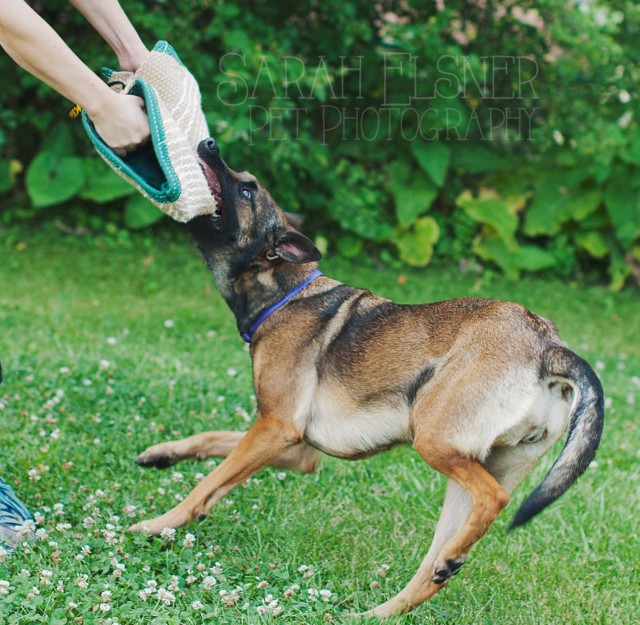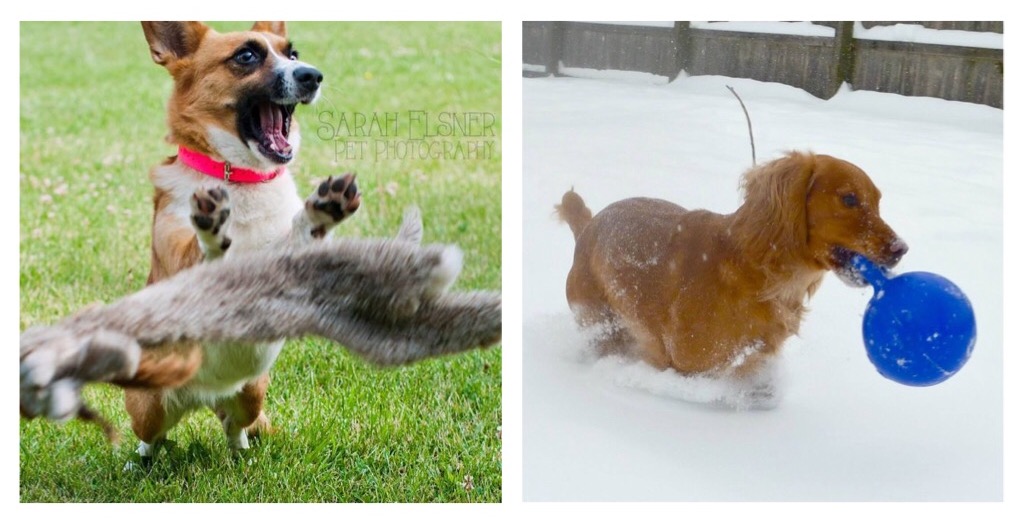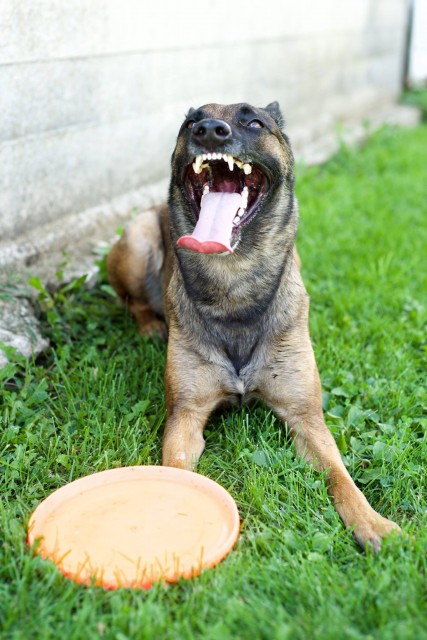“He doesn’t like toys. If I throw something, he runs after it a little but won’t pick it up,” explained Pam, the very nice owner of a very cute 1 yr old Sheltie named Casey. She picked up the toy in question, pushing it at Casey’s nose. “I wish he would play with toys, because it’s an easy way to exercise him.” She pushed the toy at him more, and he walked away, off put.
I smiled. There were many toys strewn about the living room, so I picked a soft, fluffy toy with some give. A stuffed gorilla, actually.
Ignoring Casey, I began to zig and zag the gorilla along the ground, like a snake. When Casey approached, ears pricked, I zipped the toy away from him like a frightened rabbit. He pounced and grabbed it, and I wiggled it frantically along the floor while he tugged. When he let go, I tossed the toy a few feet away. He darted after it, picking it up and bringing it promptly to me. I grabbed it and resumed my zigging and zagging along the ground and he chased it like a madman, jumping and pouncing to keep up. We kept this up for several minutes.
Stunned, his owner said, “I can’t believe he brought it when you threw it. He’s never done that before, ever.” She watched him a little more. “Wow, he really likes that!”
The truth is that Casey loves toys, but no one knew how to play with him.
So how do you play with a dog?
1.) The Toy is Prey
That’s right. Your neighbor’s sweet Labrador, who would never hurt a fly? His obsession with fetching a ball is actually a modified version of predatory behavior. The reason dogs love squeaky toys is that prey animals make high pitched sounds when wounded or distressed. To be clear, playing with toys is NOT encouraging your dog to kill live animals – in fact, it gives him a healthy, harmless outlet for perfectly natural behavior. But when you play with your dog, remember that the toy is prey.
A rabbit never runs into a wolf’s mouth. When you push a toy at your dog, it does nothing to entice him to engage the prey item, because it’s not behaving like prey. The trick is fast, erratic movements that build yours dog’s interest, always moving away from the dog. The easiest way to start is a long the ground. Try to think of what a snake might do, and zig and zag. Here’s a video of Susie’s dog Keiko playing with a Tail Teaser. Notice how Susie moves the toy like natural prey?
2.) Different Dogs Like Different Games
Your dog will tell you what part of play he likes most with his reactions. For some dogs, like Casey, the chase rules. The movement is the most rewarding thing to dogs like these, and they live for games like the Tail Teaser or the snake wiggle. If the prey goes still, these dogs often back off, hoping it will start up again.
Then there’s the catch – for some, the chase that ends in a catch and celebratory head shake wins. These dogs don’t just want to chase, they want to catch the prey and give it a good licking. If this is your dog, it’s important to reward the chase effort with a good number of catch and kills. Be sure to praise them and celebrate when they make a catch!
For others, it’s the catch and tug that wins. Do not be afraid of tugging with your dog! It does not make dogs aggressive, that’s a very old myth that we would love to see die a swift death. These dogs love a good contest over the toy, and often grip their toys hard and give full bodied yanks. They actually prefer a good tug game to an easy win! Below you can see Blossom playing with a toy called a bite wedge. Tugging is her game, no doubt about it.
What about retrieving? Retrieving is part chase, and part catch, with a return to the human mixed in. Some dogs are natural retrievers, others not so much. Most dogs can be taught how to retrieve by teaching them that bringing the toy back will result in the part of the game they like, like tugging or more chasing. Part 2 will cover building a retrieve with a dog who doesn’t do so naturally.3.) Find the Right Toy
Different dogs like different toys! They have preferences based on what the toy looks like, how it feels, and what sounds it makes. One of my dogs enjoys small, rag-like toys that whip and wiggle, and the other loves big, firm toys she can really grab onto and tug on. You have to experiment and see what your dog prefers. Generally, I like to start out with something like the Skineez roadkill toy, which most dogs find enticing. Try toys of different textures, and see what your dog prefers. Soft, firm, fuzzy, rubbery, rope…there are lots of options, so find what makes your dog tick.
4.) End the Game While Your Dog is Still Excited
If you want your dog to like playing with you, don’t play with him until he gets bored! Instead, leaving him wanting more after each game. This is a fundamental principle of building motivation for any reward. Would you feed your dog a huge meal and expect him to want treats? Definitely not! So don’t let him get “full” on toy play. Keep your play sessions short, sweet, and exciting. It can help to have a “special” toy or two that only comes down for play sessions with humans, and to plan play times for when your dog is already looking to burn some energy. This also makes you an important part of the game, and puts you in control of an important resource in the dog’s life, which will only improve your relationship.
Part 2 will be out next week, and will cover adding structure to your games, and using toys as an obedience reward. If you’re reading this and thinking, “What if my dog already loves toys, but is totally out of control around them? He snatches them from my hands and won’t drop them on command! HELP!” Part 2 has your name on it. Stay tuned!
- How to Play With Your Dog: Part 1
- It Sounded Terrible!
- Voice Control
- I've Got This Feeling
- 4 Myths on Aggression in Dogs
- Doomed to Fail: Thoughts on "Padi"
- Welcome to Problem Solved! Dog Training
- Reducing Dog Stress During Christmas
- An Unexpected Litter, Puppy Expectations
- Behavior Intervention is Born
- Delaware - Where it All Started



